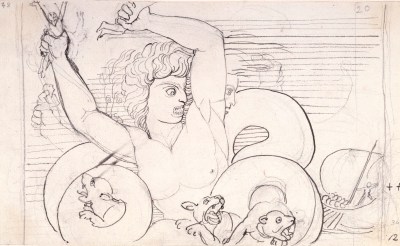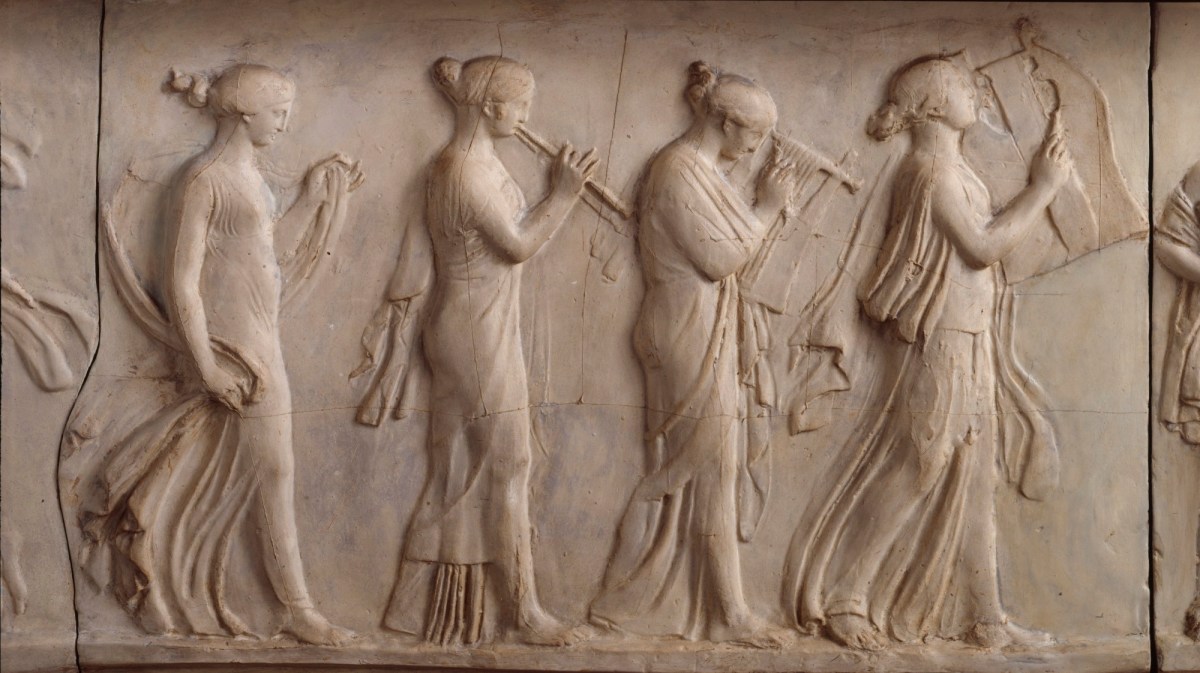
John Flaxman RA, Ancient Drama Scene, c.1809.
Plaster. 505 mm x 3745 mm x 95 mm, Weight: 60 kg. © Photo: Royal Academy of Arts, London. Photographer: Paul Highnam.
This image is not available to download. To licence this image for commercial purposes, contact our Picture Library at picturelibrary@royalacademy.org.uk

John Flaxman RA, Ancient Drama Scene, c.1809.
Plaster. 505 mm x 3745 mm x 95 mm, Weight: 60 kg. © Photo: Royal Academy of Arts, London.
This image is not available to download. To licence this image for commercial purposes, contact our Picture Library at picturelibrary@royalacademy.org.uk

John Flaxman RA, Ancient Drama Scene, c.1809.
Plaster. 505 mm x 3745 mm x 95 mm, Weight: 60 kg. © Photo: Royal Academy of Arts, London. Photographer: Paul Highnam.
This image is not available to download. To licence this image for commercial purposes, contact our Picture Library at picturelibrary@royalacademy.org.uk
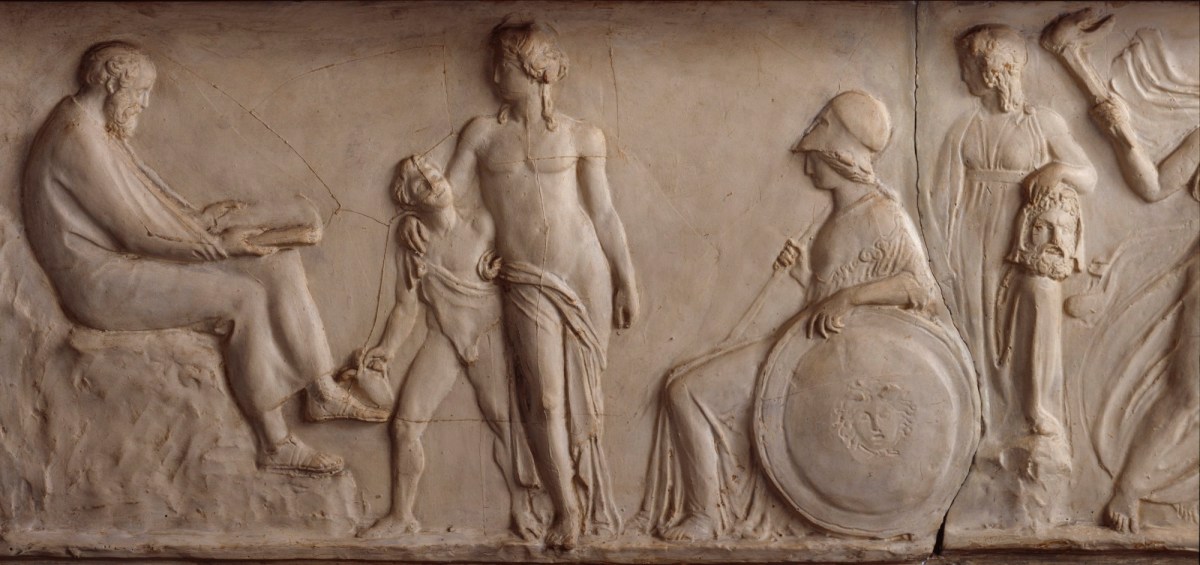
John Flaxman RA, Ancient Drama Scene, c.1809.
Plaster. 505 mm x 3745 mm x 95 mm, Weight: 60 kg. © Photo: Royal Academy of Arts, London. Photographer: Paul Highnam.
This image is not available to download. To licence this image for commercial purposes, contact our Picture Library at picturelibrary@royalacademy.org.uk
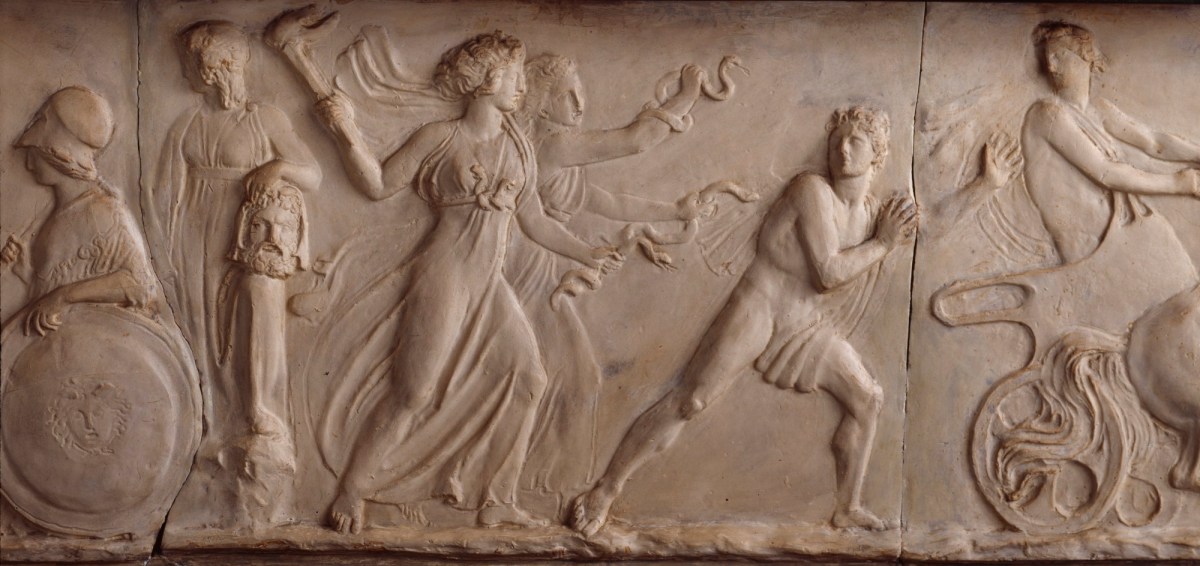
John Flaxman RA, Ancient Drama Scene, c.1809.
Plaster. 505 mm x 3745 mm x 95 mm, Weight: 60 kg. © Photo: Royal Academy of Arts, London. Photographer: Paul Highnam.
This image is not available to download. To licence this image for commercial purposes, contact our Picture Library at picturelibrary@royalacademy.org.uk
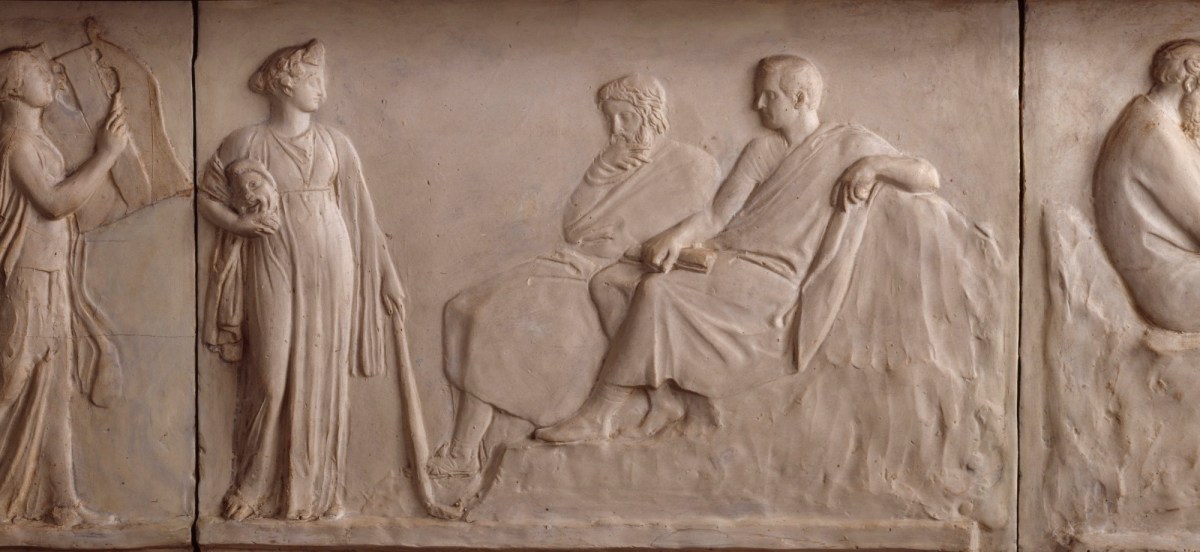
John Flaxman RA, Ancient Drama Scene, c.1809.
Plaster. 505 mm x 3745 mm x 95 mm, Weight: 60 kg. © Photo: Royal Academy of Arts, London. Photographer: Paul Highnam.
This image is not available to download. To licence this image for commercial purposes, contact our Picture Library at picturelibrary@royalacademy.org.uk
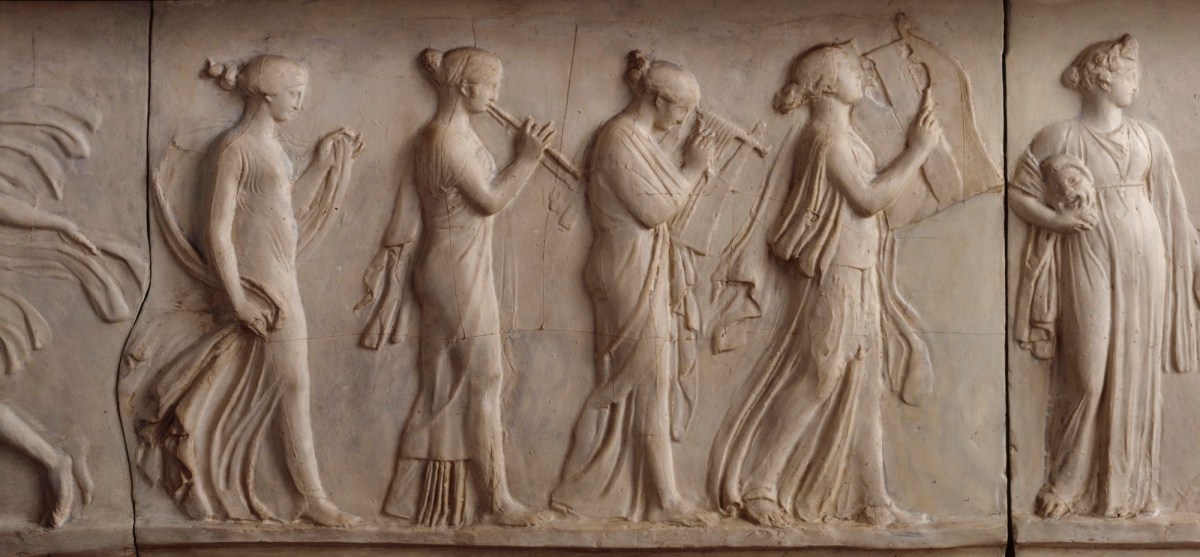
John Flaxman RA, Ancient Drama Scene, c.1809.
Plaster. 505 mm x 3745 mm x 95 mm, Weight: 60 kg. © Photo: Royal Academy of Arts, London. Photographer: Paul Highnam.
This image is not available to download. To licence this image for commercial purposes, contact our Picture Library at picturelibrary@royalacademy.org.uk
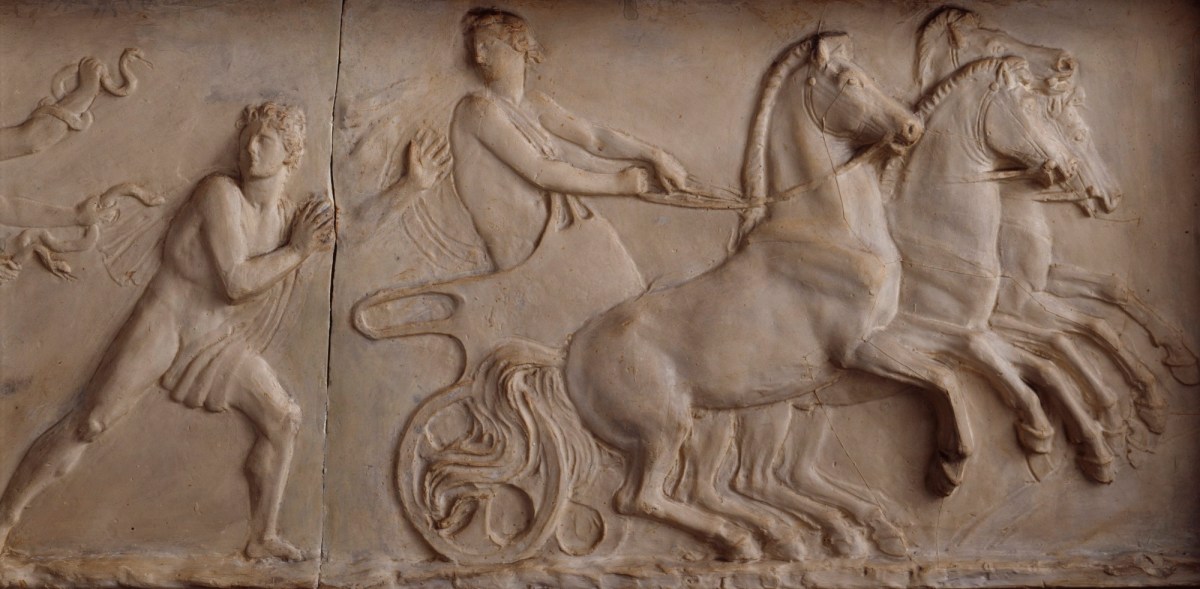
John Flaxman RA, Ancient Drama Scene, c.1809.
Plaster. 505 mm x 3745 mm x 95 mm, Weight: 60 kg. © Photo: Royal Academy of Arts, London. Photographer: Paul Highnam.
This image is not available to download. To licence this image for commercial purposes, contact our Picture Library at picturelibrary@royalacademy.org.uk
Ancient Drama Scene, c.1809
John Flaxman RA (1755 - 1826)
RA Collection: Art
On free display in Dame Jillian Sackler Sculpture Gallery
In 1809 John Flaxman was commissioned to produce two stone friezes for the façade of the Covent Garden Theatre, designed by Robert Smirke RA. The theatre burnt down in 1856, and the only works to survive were the friezes and two statues by Flaxman and Charles Rossi. The friezes inserted in the new building designed by E. M. Barry (1830-1880) erected on the site—the Royal Opera House. Flaxman’s frieze was reset behind a tall Corinthian portico and the order of the scenes changed to fit the smaller façade of the new theatre. This relief, and another in the RA collection (representing Modern Drama) are models for those friezes.
This relief, representing Ancient Drama, is divided between Greek Comedy (on the left) and Greek Tragedy (on the right). In the centre, facing left, are seated the masters of Greek Comedy, Aristophanes and Menander. Beside them stands the Comic Muse, Thalia, with her mask and shepherd’s crook. Next to her stand the Muses Polyhymnia, Euterpe and Clio (playing musical instruments) and the dancing Terpsichore. On the far left three nymphs (representing the Hours and Seasons) attend the winged horse Pegasus, a symbol of immortality.
In the centre facing away from Aristophanes and Menander is the greatest of Greek tragedians, Aeschylus. He looks towards Athena (representing Wisdom), although Bacchus, leaning on his faun, stands between them. Behind Athena stands Melpomene, the Muse of Tragedy, holding her mask. The scene behind her is taken from Aeschylus’ Oresteia, and shows two Furies pursuing Orestes, who flees for protection towards the chariot of Apollo.
Apart from Flaxman’s funerary commissions, and his illustrations of the Classics (including the works of Aeschylus), his Covent Garden friezes were perhaps his most influential works. They were some of the earliest works of British art to show the influence of the Greek sculptures Lord Elgin controversially brought to London from the Parthenon in Athens. Flaxman inspected these sculptures in the grounds of Elgin’s Park Lane home in 1807, soon after their arrival in London.
Like the Parthenon, Flaxman’s long frieze is alternates between moments of energy and repose. The rearing Pegasus, and Orestes fleeing from the Furies, provide a momentum which is counterbalanced by the mirrored dramatists in the centre. The chariot and horses of Apollo on the right are particularly reminiscent of the Elgin marbles, which Flaxman in his Fourth Lecture at the Royal Academy described as 'the most precious examples of Grecian power in the sculpture of animals', in which the horses seem 'to live and move, to roll their eyes, to gallop, prance, and curvet … the beholder is charmed with the deer-like lightness and elegance of their make' (Flaxman, 1838, p.102). Other figures were based on different classical works; the seated figure of Menander, for instance, is taken from a sculpture in the Vatican, a cast of which is in RA Collection.
Contemporary reviews of the works were enthusiastic, with one writer in 1815 finding that 'the composition and executive part of these basso relieves [low reliefs], are entitled to every praise; the characters, in the main, are marked with much boldness and precision; there is a spirit of poetical imagery in the allegorical and ideal appendages, which gives to this sculpture a kind of epic dignity, not unworthy [of] the genius of the master, from whom the general idea has been caught.'
This model for Ancient Drama was Flaxman’s work alone, although contemporary references state that the model for Modern Drama was executed by Smirke’s protégé Charles Rossi RA (1762-1839). Rossi, who also cut the stone for both friezes, complained about this work taking him away from other commissions such as his monuments in St. Paul's Cathedral. The Academician and diarist Joseph Farington related that Rossi 'spoke of the little power Flaxman has in working upon marble or stone. His power is confined to designing and modelling.'
Further Reading
Encyclopaedia Londinensis, Volume 13, London 1815, p.532
John Flaxman, Lectures on Sculpture, London 1838, p.102
David Irwin, John Flaxman 1755- 1826. Sculptor, Illustrator, Designer, London 1979, p.172
Object details
505 mm x 3745 mm x 95 mm, Weight: 60 kg
Start exploring the RA Collection
- Explore art works, paint-smeared palettes, scribbled letters and more...
- Artists and architects have run the RA for 250 years.
Our Collection is a record of them.
